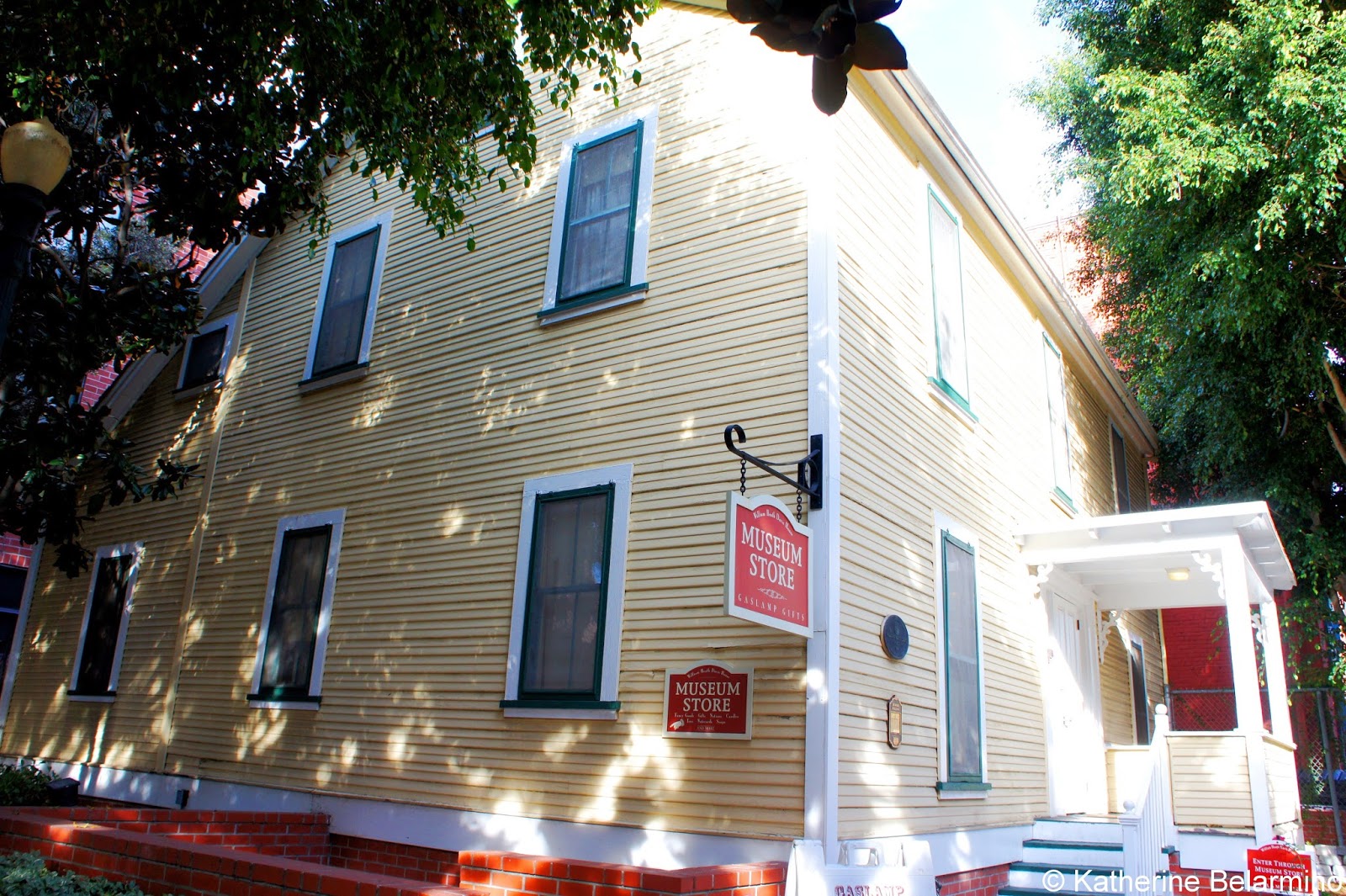Learning San Diego's History Through House Museums
One of my goals is to start exploring my own city more. I decided to start off being a San Diego tourist during February’s Museum Month, when San Diego’s museum admission prices are 50% off. I discovered some museums I had never visited and more importantly learned a lot about San Diego’s history and its origins through one of my favorite types of museums, house museums.
Whaley House Museum
The Whaley House Museum in Old Town is the only one I had visited previously, but that visit was during a school field trip and all I remembered were the ghost stories. While the Whaley House certainly has its sad stories, it also has a lot of important San Diego history as well.
 |
| Old Town San Diego's Whaley House Museum. |
Thomas Whaley moved to California during the Gold Rush. He purchased land in Old Town which had previously been used for executions, most notably the hanging of Yankee Jim Robinson. While others superstitiously avoided the property, Whaley started building on the property in 1856. Some suggest the Whaleys’ bad luck and other unfortunate circumstances surrounding the home were related to the property’s sordid past.
Whaley first opened the Whaley & Crosthwaite General Store in the first floor of the building. When he started falling on hard times financially, he began renting out portions of the family home. The home was the location of one of San Diego’s first courthouses as well as San Diego’s first commercial theater. Today various rooms of the home exhibit the different roles the building played in San Diego’s history.
 |
| San Diego's early courthouse and first commercial theater. |
Of course the most well-known story of the Whaley house is that of Whaley’s daughter Violet. When her marriage ended in divorce after only one year, Violet first attempted suicide by jumping into the well on the property. When that attempt was unsuccessful, Violet shot herself in the outhouse. Some believe the house is haunted by her spirit, amongst others.
The Whaley House Museum can be visited on a self-guided tour. A pamphlet explaining the different rooms is provided with your ticket purchase, and docents dressed in period clothing are stationed throughout the house to answer questions and share historical stories.
Gaslamp Museum at the William Heath Davis House
The Gaslamp Museum at the William Heath Davis House in the Gaslamp Quarter of San Diego, historically New Town, is the only remaining house in San Diego where Alonzo E. Horton, one of the founders of San Diego, lived. The home was originally built in 1850 by William Heath Davis, who was the first to attempt building a New Town San Diego. However, Davis returned to San Francisco in 1851 when a huge fire in San Francisco destroyed the majority of his wealth.
 |
| William Heath Davis House, the oldest wooden structure in downtown San Diego. |
Horton arrived in San Diego in 1867, purchased 960 acres of land and one-half interest in the Davis house, and moved in with his wife. Horton began the real estate boom in San Diego and established the government in New Town, much to the dismay of Thomas Whaley and other Old Town residents.
 |
| The parlor furnished as it would have been when the Hortons lived in the house. |
In 1873 the house was purchased by Anne Scheper and it became a hospital. The house changed hands again in 1890, this time purchased by Henry and Lina Lohmann. Even back then the Lohmann family understood the historical significance of the house and vowed to preserve it and later have it turned into a museum.
Marston House Museum & Gardens
According to our guide, the Marston House Museum & Gardens in Balboa Park is one of the top 25 Arts and Crafts movement homes in the country and one of only 10 open to the public. The home was built in 1905 for George W. Marston, who came from Wisconsin and first worked for Horton.
 |
| Marston House & Gardens |
Marston became an important business man and owned the major department store in San Diego. He was also a prominent civic leader. His house had some very illustrious visitors, including Teddy Roosevelt and Booker T. Washington. The dining room is where the Panama-California Exposition of 1915 was planned. Marston is credited for planting Balboa Park, originally City Park, with Kate Sessions, creating some of our state parks, such as Torrey Pines, and ensuring beach access would always be free for the public.
The Marston House was designed by Irving Gill who previously worked with Frank Lloyd Wright. Unlike many of the ornate homes being built at the time, Gill wanted his homes to reflect stark beauty. Rooms lacked the ornate moldings and cornices, but instead were trimmed in plain old growth redwood so the furnishings stood out. The Marston House contains a number of important paintings and pieces of furniture, including some very rare Stickley pieces. There is also a room containing some very rare San Diego made furniture.
 |
| Marston House interior including some Stickley chairs. |
The Marston House Museum & Gardenscan be visited on a guided tour.
Being a tourist in your own town is something I highly recommend. It was fascinating to visit these San Diego house museums I didn’t even know existed and gain a better knowledge of my home town through these homes of individuals important to the creation of the city I know today. If traveling to San Diego in the month of February, be sure to pick up one of the San Diego Museum Council’s museum passes at Macy’s, and no matter when you visit, tour these house museums.